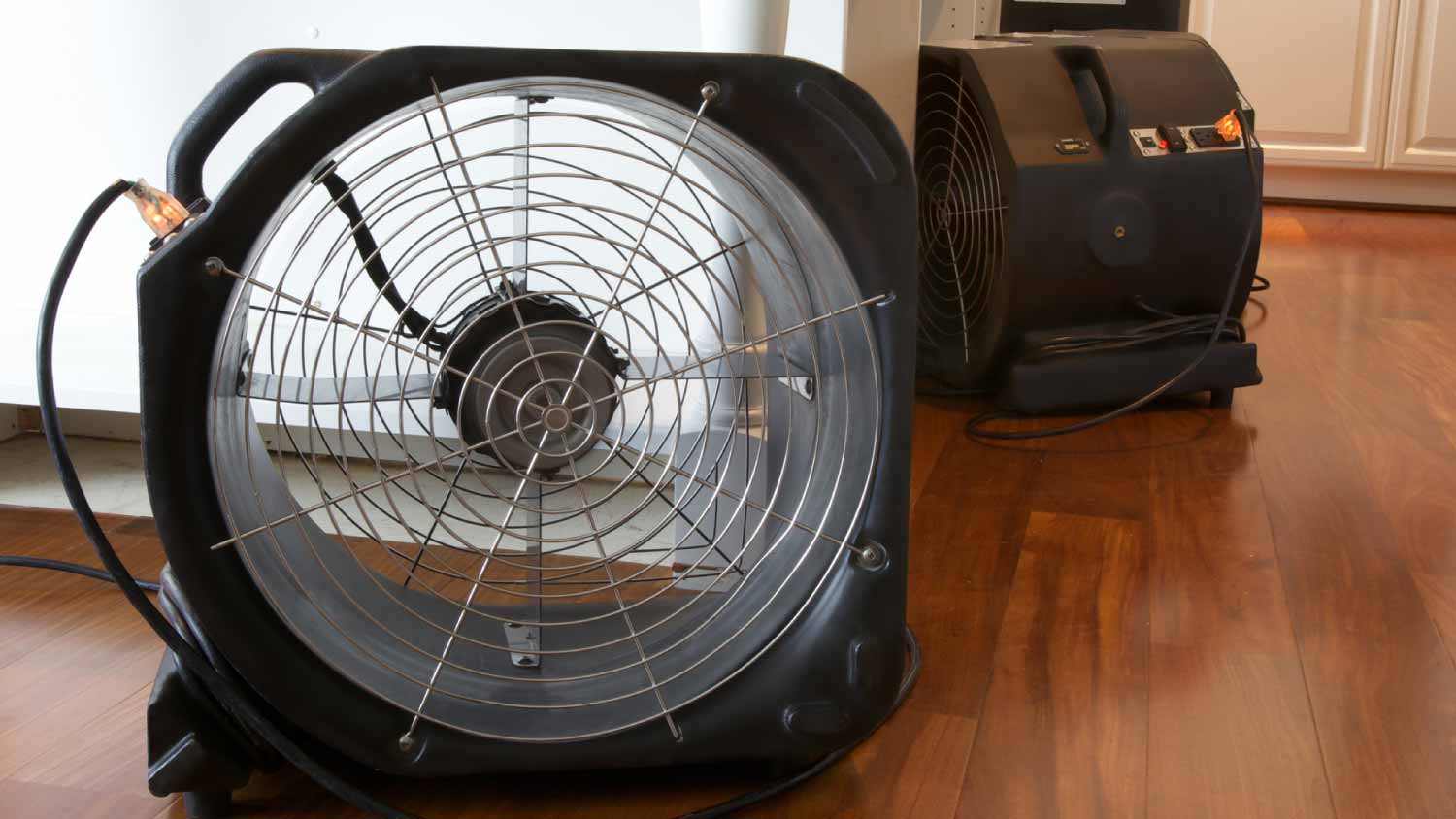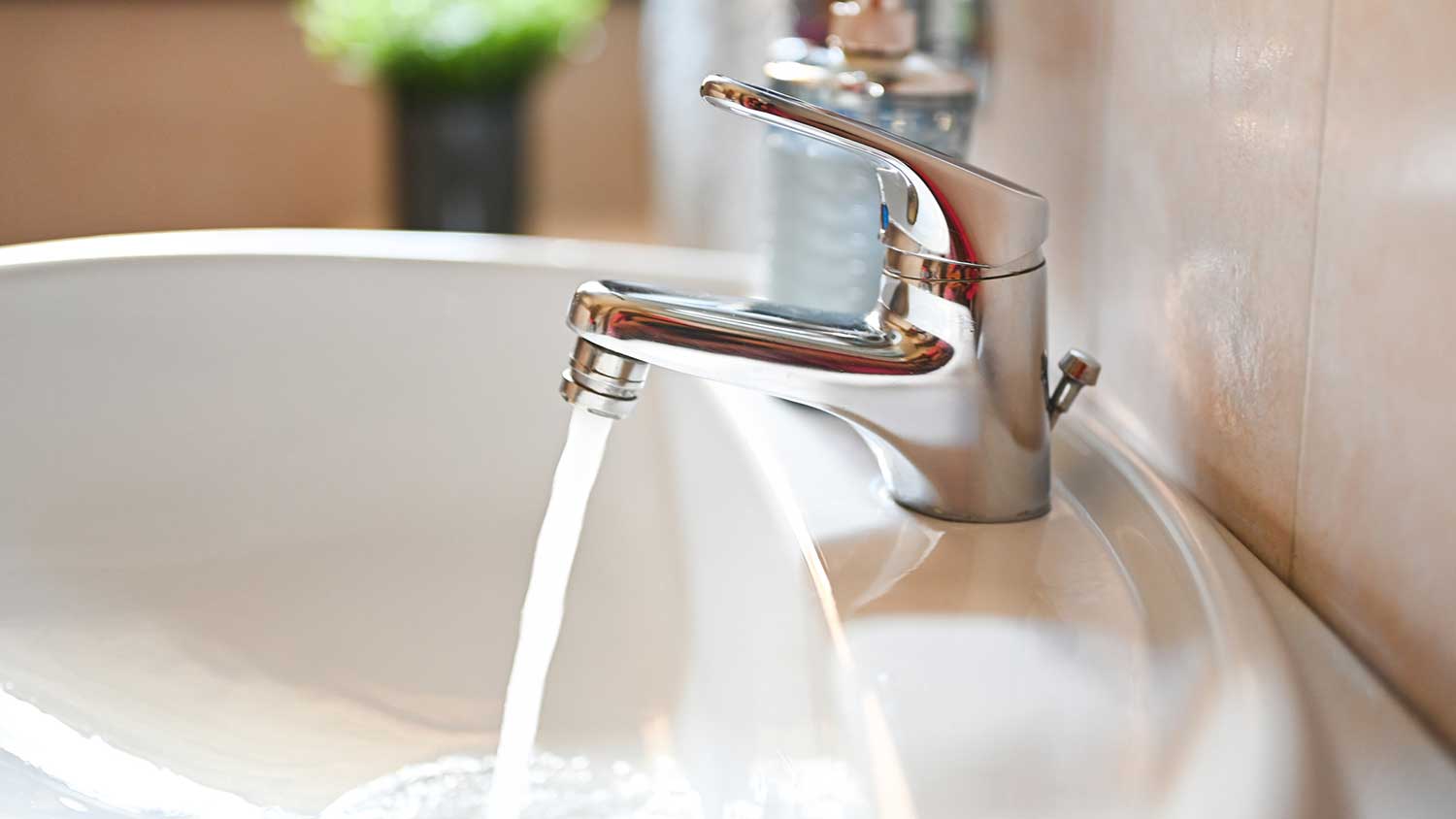How Long to Run Fans After Water Damage
Ventilation is key if you’re not a fan of mold


Run fans for 24 to 72 hours after you’ve cleaned up the bulk of the water in your living space.
Consider opening windows or running a dehumidifier to speed up the drying process.
Running fans is crucial after water damage to reduce the risk of mold growth, which is a health hazard and can do more damage to your home.
The last thing you want to see as a homeowner is major water damage in your home, and while you can’t always avoid it, you can take steps to mitigate the lasting damage. Once you have standing water and puddles removed, creating airflow will help dry everything out and avoid mold growth. Let’s discuss how long to run fans after water damage to avoid further issues.
How Long Should You Run Fans After Water Damage?
You should run blower fans for a minimum of 24 hours after water damage, but keeping them on for 48 to 72 hours is ideal to ensure everything dries out thoroughly.
Factors That Affect the Timeline
There are a few things to consider that can help you determine how long you’ll need to run fans after a leak and how long your water damage restoration process takes.
The Extent of the Damage
For major water damage that involved standing water and affected entire rooms or floors in your home, it’s best to run fans for 72 hours or more to dry everything out. For minor damage behind a single wall or in a specific area in your home, you can direct fans more accurately toward the moisture and get away with running them for 24 to 48 hours. You can ask the water damage restoration company you hire what timeline they recommend.
How Absorbent the Materials Are
More absorbent materials like drywall, insulation, and carpeting will take longer to dry out than concrete and wood flooring. Run fans for 48 to 72 hours if you have highly absorbent materials that are waterlogged, and opt for 24 to 48 hours if you have less absorbent materials.
The Humidity in Your Area
The humidity in your room will affect how readily water evaporates into the air. If you have high humidity levels, run fans for 72 hours or longer. If you have low humidity, you may find that even major water damage dries out in 24 hours.
Why It’s So Important to Run Fans After Water Damage

Running blower fans in your home after water damage is crucial because it dries out hidden moisture and absorbent materials, reducing the risk of mold growth. Mold can start growing after water damage in just 12 to 24 hours, and building materials will rarely dry on their own in that timeframe. Blower fans speed up evaporation and can help dry everything before mold can set in.
Avoiding mold is paramount for a few reasons. First, it releases spores into the air and creates a health hazard. Mold spores can cause allergic reactions and make respiratory problems worse. Mold can also cause further damage to your building materials, which increases the cost of water damage restoration for you and creates unpleasant and persistent odors in your home.
How to Speed Up the Drying Process
Running blower fans in the damaged area and pointing them toward problem areas is the best way to dry out your living space, but there are a few additional things you can do to speed up the drying process.
Remove standing water and puddles: Begin the water damage restoration process by pumping out standing water and removing puddles with a shop vacuum or by having a local water damage restoration company tackle these first steps for you. Visible water will take longer to evaporate with fans, so remove any accumulation you see first.
Open the windows: If the weather and temperature outside allow, open your windows to introduce fresh air and increase ventilation of the space.
Run a dehumidifier: Consider running a dehumidifier alongside your blower fans. This will pull moisture out of the air and speed up how quickly water in your building materials evaporates.
Frequently Asked Questions
The first step after water damage is to stop the damage from worsening, which often means stopping the leak or hiring a water damage restoration company to stop it for you. Your next course of action should be to document the damage and contact your insurance company. Then, remove standing water, use a shop vacuum to remove puddles, and set up blower fans and dehumidifiers to begin drying out the space. You can then work with your water damage restoration specialist to get estimates for repairs.
Blower fans are better for preventing mold growth than dehumidifiers because they target the damaged areas and increase the rate of evaporation, which dries out the building materials. Ideally, you should run blower fans and a dehumidifier, as this will allow the fans to move dry air over your damaged building materials, drying out the space even more quickly.















